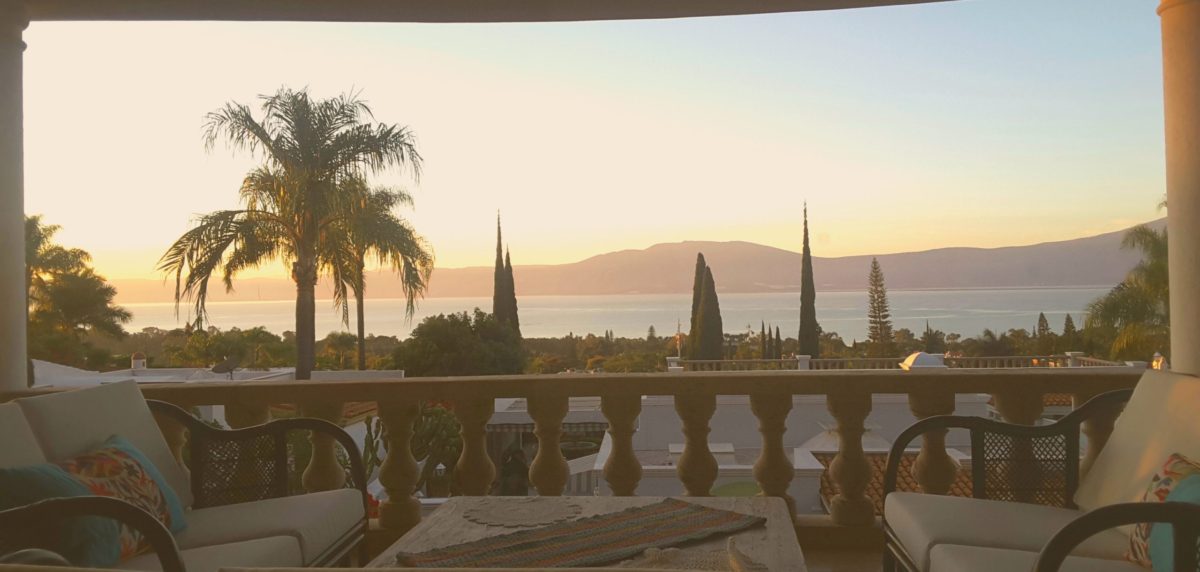We’re on a European trip and we had the great pleasure to spend a day and night in Barcelona. We chose a hotel just a block from the Sagrada Familia Basílica, and a room with a view thereof. Spectacular. I’m sure most of my friends are generally familiar with the story of Atoni Gaudí (1852-1926) and his plans to build Sagrada Familia. He started in 1882, and it’s nearing completion today. Some of his ideas for construction had to await new technologies to be realized. The Basilica itself somehow escaped destruction during the Spanish Civil War (1936-39), when most churches in Catalonia were ransacked and destroyed, and even Gaudí’s original plans were burned. As I watched the daylight settle on the almost finished structure, the view itself changed before my eyes. Gaudí designed it to highlight different parts depending on the time of day!
And then it struck me that I was witnessing a very concrete metaphor for the Catholic Church itself. The more I probed, the deeper the connection presented itself.

It is the work of millennia, not yet finished and perhaps never will it be. Begun before electricity became commonplace, sons have become grandfathers working to finish Sagrada Familia. And yet it still needs more work to realize its master’s vision. Asked how faithful Catholics can remain so when confronted with whatever outrage presents itself, we respond, “as it was in the beginning, is now, and ever shall be, world without end, Amen!” We are not promised perfection (or completion) in our lifetime, only in eternity. If you do demand it, you expect too much.
It is beautiful, for its own sake. How many times have you heard someone say, “wouldn’t it have been better to spend all that money on the poor?” Folks who mouth those words may not know they are quoting scripture, as Judas (who wants to play that part?) scolded Mary (of Mary, Martha, and Lazarus fame) for “wasting” a year’s wages on perfume for Jesus’ feet, and Jesus replied: “You always have the poor with you, but you do not always have me” (John 12:8). Yes, we could melt down the Statue of Liberty for scrap, or sell off all the works in the Met and feed the hungry. But for all those hungry for food, there are even more hungry for beauty. Everyone needs beauty in life, and all should have their fill (not just those who can afford to visit the Metropolitan Museum!).
It is always in danger of becoming that which it is not. The Basilica is a House of God. But you can’t really visit it to pray. There are certain “free” masses, but the tourist groups fill them before the lines can even form. Sometimes you can wrangle some time in the crypt church, but otherwise you buy a ticket. This is understandable as the structure is a quite spectacular tourist attraction. But Saint Peter’s is more so, and free. The Duomo in Milan is similar in stature, and you can still enter to pray or attend exposition, gratis. Much like in the days of Martin Luther, the Church must constantly be on guard lest it become too this-worldly, and not enough other-worldly.

It is permanent, yet constantly changing. The Catholic Church has been in a battle with modernity since around the beginning of the twentieth century. After the famous Vatican II ecumenical council (1962-65), many outsiders (and some Catholics) expected the Church to “get with the times,” as in change fundamental doctrines. That it didn’t happen has been a sore point ever since for those who expected it to. But the Catholic Church has something called the Deposit of the Faith, and the Pope and his fellow Bishops are responsible for safe-guarding it, not changing it. Doctrine can “develop,” but the authenticity of any developments is demonstrated by how the fundamentals remain the same after the “change.” Gaudí’s towers and spires look amazingly different in the morning and evening light, yet remain fixed physical structures; thus it is for the Church, too. There are other places which welcome a more flexible, with-it vibe. Peace be with them.
It is a compromise between an eternal vision and an earthly reality. The immensely high towers could not be constructed from the materials available when Gaudí envisioned them. Money ran short, time and again. Adjacent structures had to be razed, dispossessing their owners. Progress was retarded by both the Spanish Flu (1918) and the Covid pandemic (2019). Construction exhausted a stone quarry in Montserrat, and England came to the rescue. The Church proceeds, always two steps forward and one step back, always trying to reconcile human frailty with Divine mercy and Divine justice.
It can be used and abused, for good or for ill. Millions are moved simply by the sight of it. Thousands swarm its perimeter, hawking everything from bird-calls to kitschy, plastic Jesus souvenirs. It inspires spontaneous prayers and premeditated pick-pockets. Just so the Church has been a refuge for sinners and swindlers, a hospital for the sick and haven for scoundrels.

It is a temple “not made by human hands” yet of this earthly domain. Gaudí’s design is organic. Its spires and columns resemble trees stretching up from the earth, ending in branches and grape clusters and sheaves (you know, “bringin’ in the sheaves”). It somehow appears to have grown there, rather than placed there as so many other edifices do. Yet its complicated history suggests it was placed there, just not by Gaudí, nor any of the builders. So, too, the Church which endured Roman persecution, barbarian invasion, schism and Reformation, crusade and jihad, Nazism and Communism, state capture and modern indifference. There it stands, demanding your notice.
Thus shall it ever be.
